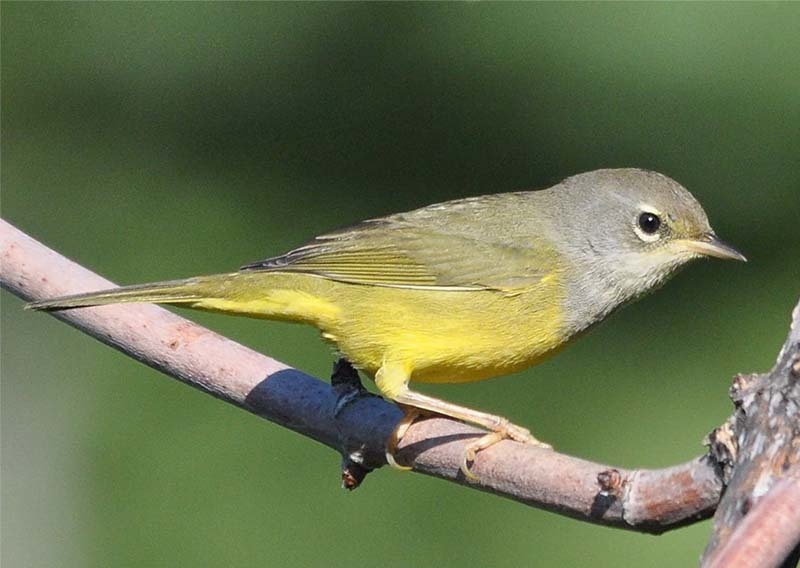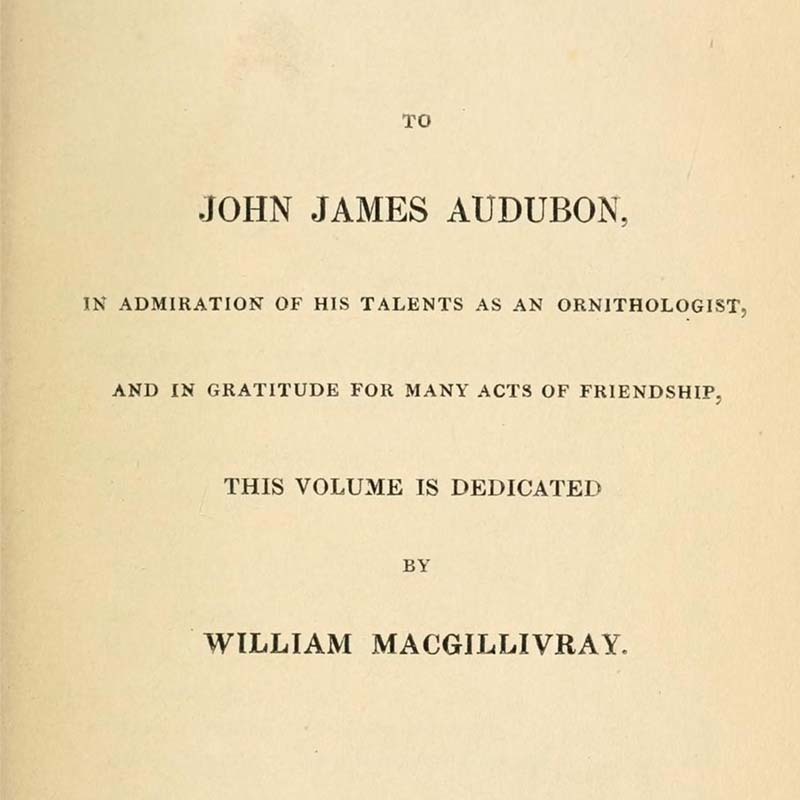Collaboration

Ornithological Biography
Audubon decided to produce a scientific text to accompany the spectacular paintings of Birds of America. As his first language was French, he required help to write the descriptions of each bird,despite his vast knowledge of their habits.
Audubon met MacGillivray in 1830 while MacGillivray was employed at the University of Edinburgh and they began an eight-year collaboration on the 12 volumes of text, entitled ‘Ornithological Biography’. Audubon described how this began:
“[Mr. James Wilson] gave me the card with the address of Mr. W. MacGillivray, spoke well of him and his talents, and away to Mr. MacGillivray I went … He agreed to assist me and correct my manuscripts for two guineas per sheet of sixteen pages.”
Audubon sent MacGillivray copy to work on, sometimes posting it from America. It remains unclear how much of the Ornithological Biography was written by Audubon and how much by MacGillivray.
Exchanges and learning
Audubon benefitted from the scientific knowledge and writing skills that MacGillivray brought to the Ornithological Biography. Meanwhile MacGillivray gained valuable experience that helped him to publish his own work, A History of British Birds, in 1837. In this book he repeatedly refers to the important information he learned from Audubon.
A Close Friendship
Alongside the professional benefits of their collaboration, Audubon and MacGillivray enjoyed a close friendship founded on their love of nature, despite their very different backgrounds and personalities. Audubon named “MacGillivray’s Warbler” and “MacGillivray’s Seaside Sparrow” after his friend. When MacGillivray published Description of the Rapacious Birds of Great Britain (1836) he dedicated it to Audubon.
Gallery
Click on an ima0ge to view full size.

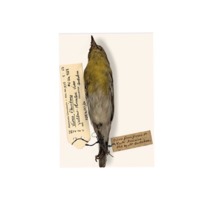
Bird study skin presented to William MacGillivray by John James Audubon
1838
A study skin is, as the name suggests, the preserved skin of an animal with its fur or feathers intact. Audubon caught and killed this Yellow–throated Viero so that he could study them up close. In an act of friendship and scientific collaboration, Audubon then gave the skin, along with 11 others, to MacGillivray for his own research.
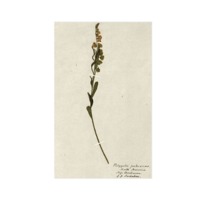
Polygala Pubescens specimen, presented to William MacGillivray by John James Audubon
This specimen was collected by one of the daughters of Maria Martin-Bachman, an American painter who assisted Audubon with backgrounds for Birds of America. The specimen must have been given to Audubon, as he in turn gave it to MacGillivray in Scotland, who added it to the University’s collections. It is a good example of how specimens were shared and exchanged between colleagues and friends.
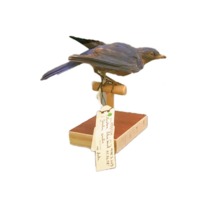
Eastern Bluebird
This stuffed specimen is one of the species that features in Birds of America. Audubon painted his Eastern bluebirds sharing a meal of insects, perched upon a yellow flowering plant. The text in Audubon and MacGillivray’s Ornithological Biography describes the birds’ ‘innocent vivacity,’, and the ‘pure azure’ of their feathers. It also goes into close anatomical detail, even describing how the birds’ intestines are ‘rather short and wide’.

